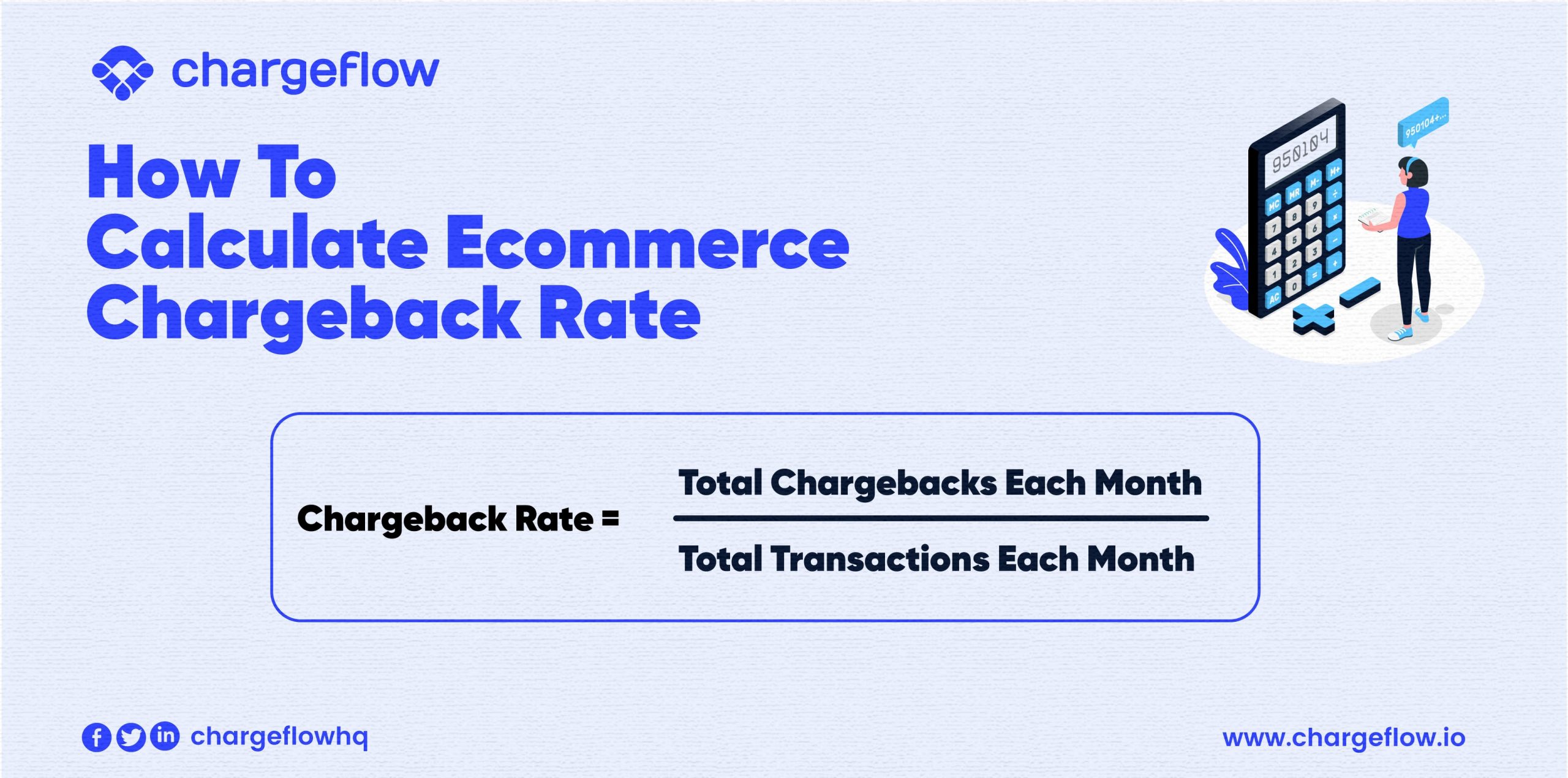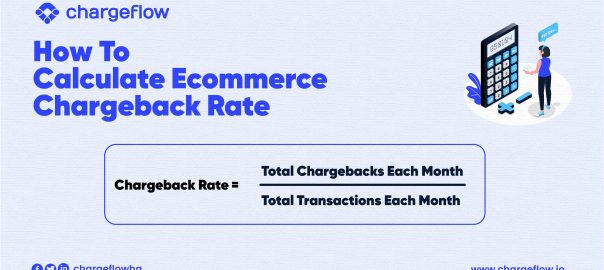eCommerce is a brilliant concept that leveled the business terrain for the little guys to participate in global commerce. And the metrics for success aren’t farfetched: create a product people love, create skillful marketing strategies, and frictionless distribution funnel to get your offering to those who need it. But it’s not enough to have an optimum checkout experience. You must prevent chargebacks by ensuring your customers are happy with their purchases.
This article will help you uncover insider secrets to ensure you not only create a formidable business that serves large clientele seamlessly but also avoid pitfalls of revenue loss due to customer disputes and excessive chargebacks.
We’ll answer crucial frequently asked questions such as:
- What is an eCommerce chargeback?
- Why do eCommerce chargebacks happen?
- How do you calculate the eCommerce chargeback ratio?
- How can you prevent eCommerce chargebacks effectively?
First, here are some numbers that might be of relevance as you work on optimizing your business processes for the coming year:
- Mobile commerce will account for 53.9% or more than half of all eCommerce transactions in the U.S. by the end of 2021 (Statista).
- The global social commerce market share could reach $ 2. 9 trillion by 2026 (ReportLinker).
- Open Banking records a 24.4% growth in 2021, and the market value will reach over $ 43 billion by 2026 (Allied Market Research)
That said, let’s get back to our topic of the day.
What is an eCommerce chargeback?
An eCommerce chargeback is when a cardholder disputes a particular transaction to their bank. When a cardholder files a chargeback, the bank or credit card issuer will automatically reverse the transaction and deduct the funds from your merchant account.
Each chargeback attracts a definite fee and other complications. We shall discuss those in detail in subsequent sections.
Fundamentally, eCommerce chargebacks involve the cardholder, merchant, and card issuer or bank. The loop starts like this: a cardholder disputes the charge to their bank, the bank reverses the payment, at which point you get the notice of the deduction with an accompanying chargeback reason code. They’ll then require you to submit order documents that prove the chargeback is meritless and the refund unnecessary. That must happen within a definite period known as the chargeback response time limit.
If your documentation proves your case, the transaction fund will be credited back to your account. The problem is that the cardholder or their bank might not send the correct reason for the chargeback, making it impossible for you to win.
Also, the very nature of chargeback mediation protocols and the disconnections among the various parties involved makes it incredibly difficult for merchants to win disputes. As a merchant, the best chance you have is 20% – unless you have an extra layer of dispute mitigation framework.

Why do eCommerce chargebacks happen?
Here are some numbers on chargeback reason codes:
- 30% – the number of chargebacks that result from transactions made with a stolen card.
- 26% – the number of chargebacks that result from undelivered orders.
- 15% – the number of chargebacks initiated by cardholders due to retailers shipping the wrong product.
- 8% – the number of chargebacks that result from orders significantly not as described.
As you would notice from those numbers, eCommerce chargebacks happen for various reasons. It might be that someone used a stolen card to make a transaction, there are significant issues with the order fulfillment or return processes, or customers couldn’t get the help they needed on time.
Some eCommerce chargebacks are also a result of merchant errors such as double billing.
Whatever be the case, keep in mind that industry analysis shows that up to 80% of all chargebacks are fraudulent. There’s more: 40% of consumers who file a chargeback will do it again in less than 9 weeks. And 81% of cardholders have filed a chargeback out of convenience.
What is the actual cost of eCommerce chargebacks?
At this point, I assume you’d be wondering: if chargebacks are this horrible, why haven’t the powers that be banned the mechanism, and save everyone the headache?
Well, the thing is, chargebacks wasn’t designed to be the burden it is today.
The original principle behind the eCommerce instrument is that it serves as a measure of accountability to ensure safe and transparent business practices across the board. When a transaction issue arises, as you should anticipate once in a while, there’d be a mechanism for the cardholder to seek remediation and established rules on how the merchant can participate in making things right.
Unfortunately, as the digital landscape evolved and eCommerce transactions required more parties beyond the trio highlighted earlier, the rules of chargeback mediation didn’t develop as much. And fraudsters know this. Today, chargeback has become a $ 200 billion problem for the entire e-commerce industry. Every $ 1 in chargeback fraud costs the average eCommerce merchant at least $ 3.
So if you’re like some merchants who think their loss due to chargebacks is limited to the transaction charge, you’re wrong. The actual cost of chargeback goes beyond the transaction cost.
Here are some specifics of the actual cost of eCommerce chargeback:
- Card transaction charges
eCommerce merchants are charged a specific percentage for every card transaction a cardholder makes. And if the cardholder goes on to charge back the transaction, the merchant does not get a refund on the card processing fee – they lose that money with the cost of the merchandise.
- Chargeback fees
Similar to the above scenario, when a cardholder files a chargeback, the merchant acquirer also includes additional charges for their involvement in the mediation processes. The fee could be in the range of $ 15 to $ 100 and calculated based on the level of associated risks, i.e., the number of chargebacks the merchant received in a given period. Chargeback fees are non-negotiable for the most part, whether you win the dispute or lose.
- Excessive chargeback penalties
Banks and card networks pay keen attention to merchants’ chargeback rates to ensure they don’t cross established thresholds. We discussed the full consequences of breaching the chargeback ratio in this article, and you should examine them for yourself.
- High cost of operation and brand damage
Chargebacks don’t just take money away from your pocket. They also cost you time, human resources, and brand equity. These are, perhaps, the most expensive aspects of dealing with eCommerce chargebacks. No one will do business with you if you can not maintain a reasonable fidelity as a formidable brand in the industry. Banks can’t work with you because they’ll see your brand as high risk, and even if they happen to take your business, they’ll make you pay excessive fees to cushion their risks and future reputational crisis.
What is a chargeback ratio, and how do you calculate an eCommerce chargeback ratio?
eCommerce chargeback ratio, also known as a chargeback-to-transaction ratio, is an aggregate of your sales compared to the number of chargebacks you received in a given month multiplied by 100. That gives you the percentage of transaction chargebacks you received that period.
Each card brand has a unique way of determining a merchant’s chargeback ratio, but the formula is the same. The difference is in the source of the data for the computation.
Mastercard gets your chargeback rate by dividing the number of transactions processed by chargebacks filed in the previous month. But over at Visa, they divide by the number of transactions a merchant processed by the number of chargebacks filed during the current month.
Discover and AmEx go the same route with Visa. But because each card brand only uses transactions processed through their network for the computation, you’ll end up with a different chargeback ratio for each network.
How can you prevent eCommerce chargebacks effectively?
If you want to win disputes and stop chargeback fraud effectively, you must apply the best practices. That’s crucial because your business will suffer if you don’t maintain a low chargeback rate.
Here are some ideas on how to prevent eCommerce chargebacks effectively.
- Have an explicit order cancellation and return policy.
Ensure your customers know how to cancel or return their orders if they choose to do so. Some eCommerce chargebacks result from ambiguity when buyers can’t opt-out of their subscriptions. 80% of such cardholders file a chargeback because they don’t have time to deal with the merchant.
- Make your billing statement easy to recognize.
Some unauthorized transaction chargebacks happen when cardholders don’t recognize the merchant’s bill on their statement. Other times, they could forget specific subscription packages, especially those that last for a long time. Make it easy for your users to track your deductions in their billing records.
- Stop fraudulent transactions with authentications.
Establish protocols to ensure you got customer signatures, PINs, or CVV codes for CNP transactions. A recent survey shows that Card-Not-Present fraud could reach $ 130 billion by 2023. More so, industry analysis shows the cost of false declines to businesses ranges from $ 118 to $ 331 billion in the U.S. alone.
- Be compliant with payment processing rules.
Use standard security protocols for card transactions and keep detailed transaction data. Be sure to collect comprehensive data on each order to prove each transaction’s authenticity and have sufficient compelling evidence in case of a chargeback.
- Ship on time, track shipments, and add insurance coverage.
When shipping orders of high value, be sure to ship them with insurance and tracking. Ensure your customers have sufficient order movement information to tell the status of their shipment. And when you’ve satisfied the order, ensure to keep a delivery confirmation in case of disputes.
- Automate your chargeback.
Research shows that about 40% of chargebacks stem from internal issues that you can prevent.
That gives you a just-in-time alert and email whenever a customer disputes a transaction. And adequate data on each transaction from over 50 data points to prevent fraudulent chargebacks and address those disputes on your behalf.
Originally published here.
Digital & Social Articles on Business 2 Community
(34)






